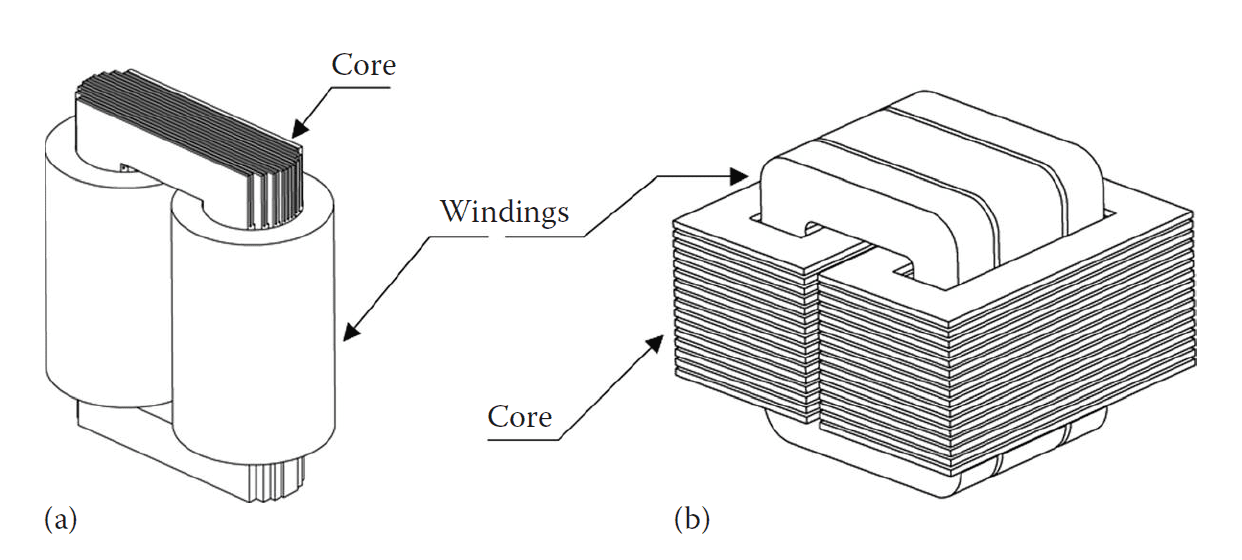Difference Between Core Form and Shell Form Power Transformers
We are pleased to announce that AllumiaX, LLC. has now acquired GeneralPAC. This is to add more value through our fundamental courses on Power Systems and provide a platform where students and professionals from all communities can ask and learn in an easy and captivating fashion.
One of the most important devices in the power system is the transformer. Whether on the generation side, transmission, or the final stage/ distribution side, transformers are used to either step up, isolate, or step down AC signals. Power transformers (generally 10 MVA and up) are used everywhere from the distribution substation, back to the generation plant
In this series, we will be exploring the differences between the two main power transformers used in the industry; core form type, and shell form type transformers. Core form transformers are the most prevalent throughout the world, however, in North America, shell form transformers are commonly used. In fact, if you have taken any power systems course, it is most likely that you have only studied the model and magnetic circuit of core form transformers.
What do we mean when we say "core" or "shell" form transformers?
In this series, the differences in the physical makeup of these transformers is discussed, which is the reason for al the other differences between the two types of transformers (cost of production, ease of maintenance, short circuit capacities, etc.). For core form transformers, the windings surround the core, i.e. the windings are wrapped around the core. On the contrary, for shell form transformers, the core surrounds the windings. This difference is illustrated in Figure 1.
Which Construction Type is More Popular? Why?
Core form power transformers are by far much more widely used throughout the world, this is because of the simplicity of the design of core form power transformers. Since core form transformers design is so simple, they cost less than shell form transformers, which have a much more complex design. However, shell form power transformers are widely used in North America 2. Some of the main advantages of shell form transformers are, they are more compact than core form transformers, and have a great mechanical strength. Having great mechanical strength comes in to advantage here because, in an overcurrent situation, the transformer is less prone to being damaged. Despite the many advantages the shell form power transformer has over the core form, it is usually only chosen in larger power transformer applications, due to the cost of the shell form transformer being greater than the core form transformer. We will discuss more of the advantages of the core form and the shell form transformer in the following sections.

Figure 1: Transformer: (a) core form (b) shell form
References:
- Hollings, Gregory. "ABB Conversations The Difference between Distribution and Power Transformers." ABB Conversations The Difference between Distribution and Power Transformers Comments. N.p., 27 Sept. 2013. Web. 05 Mar. 2016. (PDF) ↩
- López-Fernández, Xose M., H. Bülent. Ertan, and J. Turowski.Transformers: Analysis, Design, and Measurement. Boca Raton: CRC, 2013. Print. (Buy on Amazon) ↩

